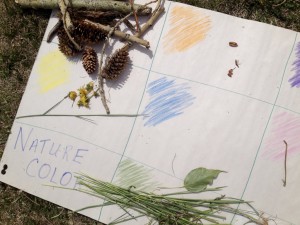 Kids love colors. They naturally love exploring, hunting, seeking and discovering. By using this colors of nature activity you can help them discover all the colors and beauty in nature and that you can find them in the most unexpected and unique places.
Kids love colors. They naturally love exploring, hunting, seeking and discovering. By using this colors of nature activity you can help them discover all the colors and beauty in nature and that you can find them in the most unexpected and unique places.
Have you ever looked outside and wondered at all the colors of nature? The beauty of a field of wildflowers, purple, red, yellow; the wonder of the sunset, pink, orange and gold. Nature is full of color. From lush greens to deep purples and vibrant blues, they are all there, every color waiting to be found. This is one of the wonders and beauty of nature, that you can find every color possible there, every color if you look (because sometimes they are not that obvious).
In nature there is color in everything. No matter where you look there are different hues of blues, greys, greens and reds. You can find pinks tucked into rocks and oranges along the sea beds. You just have to look.
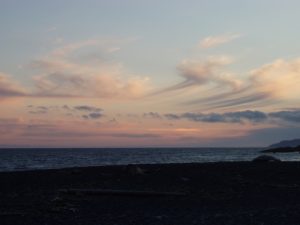 For many when we look outside we notice what we see the most of – the green trees, the blue sky, the yellow sun. But what if we were to look a little closer? What if we looked closer and noticed that the sun had spots of orange in it or a purple hue around the outer edge. Those colors are there but may not be obvious to us unless we are asked to look. And when we do, we often make the most unique discovery! Surprised to find it there.
For many when we look outside we notice what we see the most of – the green trees, the blue sky, the yellow sun. But what if we were to look a little closer? What if we looked closer and noticed that the sun had spots of orange in it or a purple hue around the outer edge. Those colors are there but may not be obvious to us unless we are asked to look. And when we do, we often make the most unique discovery! Surprised to find it there.
Children love exploring and searching. They are like sponges waiting for water to soak up. They too see the obvious when they first step outside, but this colors of nature activity will not only teach them to look beyond the obvious, it will show them that all colors are everywhere in the natural world if they look a little closer and a little deeper.
Colors of Nature Activity
The thing I love most about this activity is the simplicity of it. How easy it is to put together and do with kids. All you need is a flip chart size piece of paper and some crayons.
- Draw a color chart on a large piece of paper (flip chart size works well). Divide the paper into 9 equal squares. In each corner of the square choose a color and color that corner, say pink. That square now represents pink items. Do the same with the rest of the squares choosing different colors. I like to choose some colors that I know will be easy, like green and brown, and start with those in the activity. This creates success for the kids. Then when you get to colors that are not as abundant they are already engaged and willing to look.
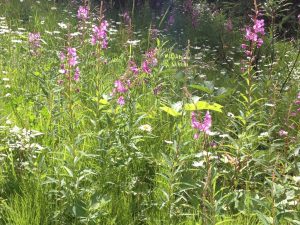 Gather the kids around the color chart (which I lay on the ground) and briefly talk about the different colors in nature and how you can find them everywhere. Ask the kids questions about where they see colors in nature as examples.
Gather the kids around the color chart (which I lay on the ground) and briefly talk about the different colors in nature and how you can find them everywhere. Ask the kids questions about where they see colors in nature as examples.- Do one color at a time. Start with a super easy color (this will depend on your location, green might be abundant in the forest but may not be at the beach). Ask them to go find natural items that are that color and bring them back. Remind them to only pick up things that they find on the ground and not pick live things or take leaves off trees.
- Have everyone place the items they found on the color square. Then take a moment to have everyone look and see the different things that were found. Point out the unique ones and discuss other things that are that color in nature that they may not have found in their area or weren’t able to pick.
- Repeat with the next color. Mix it up with colors that might be harder to find, with those that are easier. This creates a feeling of success for the kids and keeps them interested in the activity.
- Continue until your color chart is full! Then take a look at your wonderful natural color pallet.
When I did this with my kids it was amazing what we found. In a soccer field, we found oranges and pinks, purples and blues. And it kept the kids engaged for 30 minutes and probably could have continued on for longer.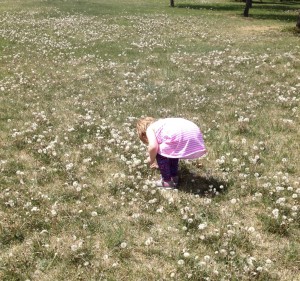
Not only did this activity allow them to explore and learn about their environment but it demonstrated that if you look close enough you can find many colors even in a soccer field. Plus it allowed them a little freedom in expanding their space, boundaries, and their exploration. It was empowering for them.
Then on our walk back we were all looking for (and finding) more colors, mostly the ones that we found less items for, and got quite excited about it.
This activity can be done anywhere. And even if you don’t have a color chart you can pick colors for kids to go and find, though the visual matching is nice when you can do it and enhances their sensory learning even more.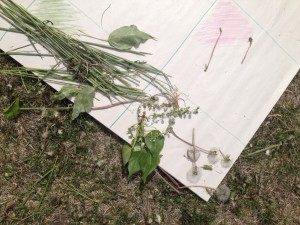
*The color chart works great with kids of all ages and works especially well with younger children. With older kids you can use paint chips and give each child one to take with them on their exploration to go and match it to something. This again expands their boundaries but also allows them to take the color to the item to actually match it and they don’t need to pick it and bring it back.



Pingback: Building Nature City - Outdoor Sensory Activities for KidsMomma On The Move
Pingback: Seeking & Sorting - Outdoor Nature Activities for KidsMomma On The Move
Pingback: Fun Earth Day Activities for Children - Learning through the OutdoorsMomma On The Move
We need a lot more insights like this!